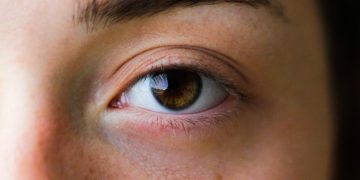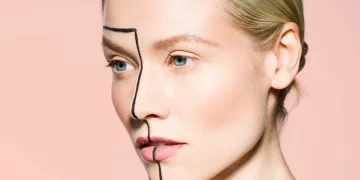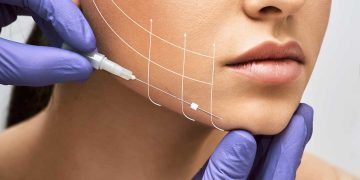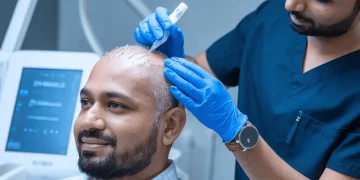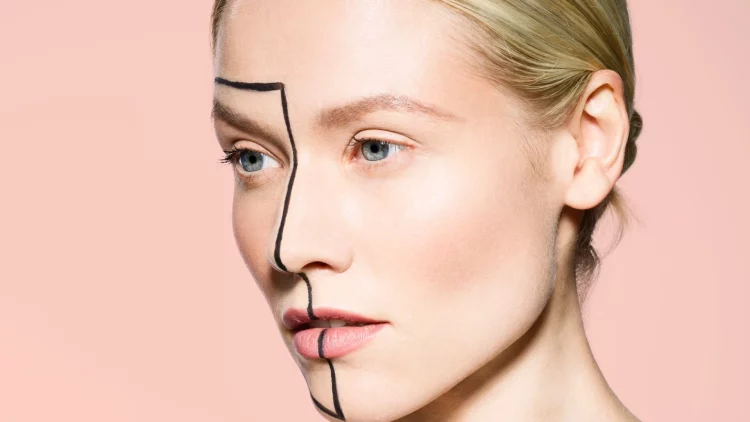The beauty and aesthetic industry is undergoing a seismic shift, moving away from the one-size-fits-all approach and into an era of hyper-personalization. At the heart of this revolution is Artificial Intelligence (AI), a technology that is transforming clinics from artisanal studios into data-driven “smart clinics.” This evolution promises a future where treatments are not just based on a practitioner’s subjective eye but are guided by objective, deep data analysis. But how exactly is this complex technology integrating into the intimate world of beauty procedures? Is it a passing trend or a fundamental redefinition of cosmetic care?
This article delves into the core applications of AI that are reshaping the patient journey. We will explore the trifecta of its most impactful implementations: advanced diagnostic imaging that sees beyond the human eye, algorithmic skin analysis that deciphers the skin’s unique blueprint, and AI-assisted injectables that bring unprecedented precision to common procedures. Together, these technologies are forging a new standard of care that is more predictive, personal, and effective.
The All-Seeing Eye: Diagnostic Imaging Beyond Human Perception
The first and perhaps most profound impact of AI in aesthetics is in the realm of diagnosis. For decades, practitioners have relied on magnifying lamps, good lighting, and their trained experience to assess skin conditions. While valuable, this method is inherently limited by human visual acuity and subjectivity. AI-powered diagnostic imaging shatters these limitations.
Modern systems utilize multi-spectral imaging, which involves capturing images of the skin under different wavelengths of light, including UV and cross-polarized light. A standard visible light photograph reveals surface-level issues like redness and pigmentation. However, when paired with AI, the analysis becomes truly transformative:
- UV Imaging: Reveals sun damage and sub-epidermal pigmentation that is completely invisible to the naked eye. It shows the “future” of the skin—the hyperpigmentation that will surface in the coming years without intervention.
- Cross-Polarized Imaging: Eliminates surface glare to clearly show underlying vascular issues, such as telangiectasia (broken capillaries), and inflammation.
- Parallel-Polarized Imaging: Highlights textural irregularities, fine lines, and pore size by emphasizing surface topography.
The AI algorithm is trained on millions of these annotated images. It doesn’t just display the pictures; it analyzes them with superhuman consistency. It can quantify the percentage of melanin and hemoglobin in the skin, map the exact density and depth of wrinkles, and create a precise, pixel-level segmentation of pores, spots, and textures. This provides a comprehensive, quantitative baseline. A practitioner can now say, with data-backed certainty, “28% of your facial skin shows subclinical sun damage,” and track changes in that percentage over time with absolute precision. This moves the consultation from a subjective discussion to an objective analysis, building immense patient trust and setting clear, measurable treatment goals.
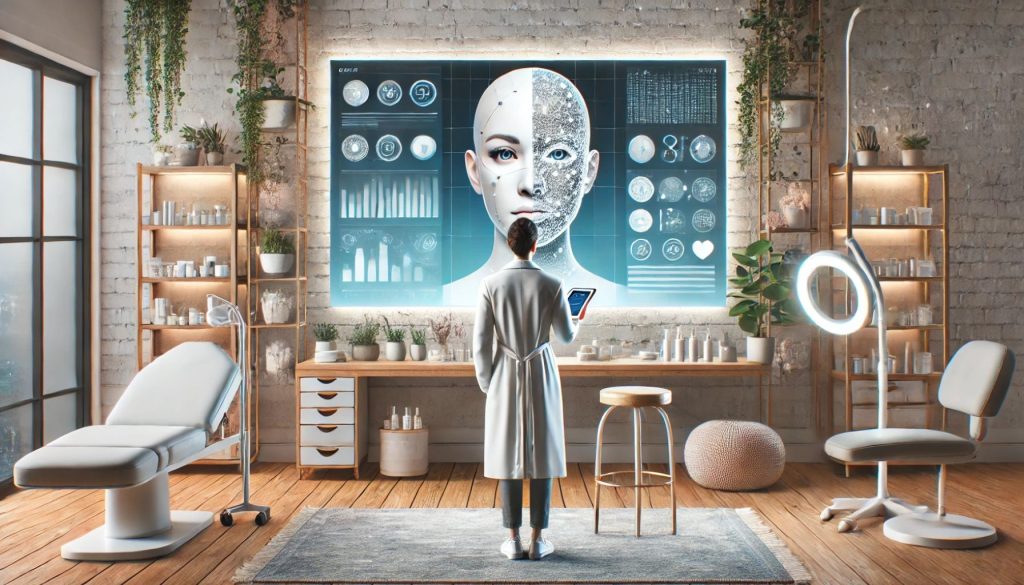
Decoding the Blueprint: Algorithmic Skin Analysis and Personalized Treatment Pathways
Once the diagnostic data is captured, the next step is interpretation—and this is where algorithmic analysis proves its worth. An AI’s ability to process vast, interconnected datasets allows it to generate treatment plans that are uniquely tailored to an individual’s skin physiology, lifestyle, and even genetic predispositions.
The process begins with data fusion. The AI doesn’t just look at the diagnostic images in isolation. It correlates them with data provided by the patient through detailed questionnaires, including:
- Skincare history and product usage
- Lifestyle factors (diet, sleep, stress, smoking)
- Sun exposure history
- Genetic markers (from DNA tests), if available, related to collagen integrity, antioxidant capacity, and sensitivity.
The algorithm identifies patterns and correlations that are impossible for a human to consistently compute. For instance, it might correlate a specific pattern of subdermal inflammation with a patient’s reported high-stress levels and a genetic propensity for slow collagen repair. Based on this holistic analysis, it can then generate a predictive model and a multi-modal treatment pathway.
This pathway is dynamic, not static. For example, the AI might recommend:
- Phase 1 (Months 1-3): A specific prescription topical regimen to target the subclinical pigmentation revealed by UV imaging, combined with a series of low-energy laser treatments to address the vascular components.
- Phase 2 (Months 4-6): A shift to a focus on collagen induction with microneedling at specific depths, optimized for the patient’s skin thickness and healing capacity as analyzed by the algorithm.
- Supporting Regimen: A curated list of topical ingredients (e.g., specific forms of Vitamin C, retinoids) and oral supplements that the algorithm predicts will be most effective for the patient’s unique biochemical profile.
This is a far cry from the traditional model of “one laser for brown spots, another for redness.” It’s a deeply personalized, evolving strategy where every intervention is data-justified and sequenced for maximum synergistic effect. The algorithm can also forecast outcomes, showing patients simulated projections of their skin’s potential improvement, which dramatically enhances motivation and adherence to the treatment plan.
The Robotic Hand: AI-Assisted Injectables and the Pursuit of Perfect Symmetry
The most technologically advanced application of AI lies in the realm of injectables like neuromodulators (e.g., Botox) and dermal fillers. This area, historically the pinnacle of a practitioner’s “art,” is now being enhanced by machine precision to achieve a new level of safety and aesthetic balance.
AI-assisted injectable systems typically use a 3D camera to create a high-fidelity digital twin of the patient’s face. The AI then performs a complex facial analysis:
- Muscle Dynamics Analysis: It tracks and measures the movement of dozens of facial muscle groups during various expressions. This allows it to identify hyperactive muscles that contribute to dynamic wrinkles with extreme precision, quantifying the exact strength of each muscle.
- Volumetric and Structural Analysis: It creates a 3D map of facial fat pads, bone structure, and tissue volume, identifying areas of age-related volume loss and asymmetry that the human eye might miss.
- Symmetry Analysis: It calculates minute asymmetries between the left and right sides of the face, down to a millimeter-level accuracy.
Based on this analysis, the AI generates an injection map. For neuromodulators, it doesn’t just suggest a total dose; it recommends the exact number of units to be injected into specific portions of specific muscles to achieve a natural, balanced relaxation while preserving essential expressiveness. For example, instead of a standard 20-unit forehead treatment, it might recommend 4 units in one subsection of the frontalis and 6 in another to prevent a “frozen” look and maintain a natural arch.
For fillers, the system can simulate the outcome of adding volume to different areas, allowing the patient and practitioner to preview the result. More importantly, it can identify risk zones by mapping the location of blood vessels based on surface topography, thereby guiding the practitioner to use safer injection techniques and reduce the risk of vascular complications.
It is crucial to understand that in current systems, the AI is an advisor, not an autonomous actor. The final injection is still performed by the skilled practitioner. The technology serves as a powerful co-pilot, providing a data-driven second opinion that augments the practitioner’s expertise, minimizes human error and bias, and elevates the consistency and safety of outcomes.
The Human Touch in the Algorithmic Age
The rise of the smart clinic does not spell the end of the aesthetic practitioner. On the contrary, it elevates their role. AI handles the brute-force computation of data, freeing up the practitioner to do what they do best: empathize, communicate, manage expectations, and apply nuanced clinical judgment. The technology is a tool that amplifies human skill.
The integration of AI in beauty procedures represents a paradigm shift from reactive correction to proactive, predictive management of aging and skin health. It promises a future with fewer complications, more satisfied patients, and treatments that are truly, uniquely their own. The smart clinic is not a cold, robotic environment; it is a more intelligent, safer, and ultimately more personal pathway to aesthetic empowerment.





















